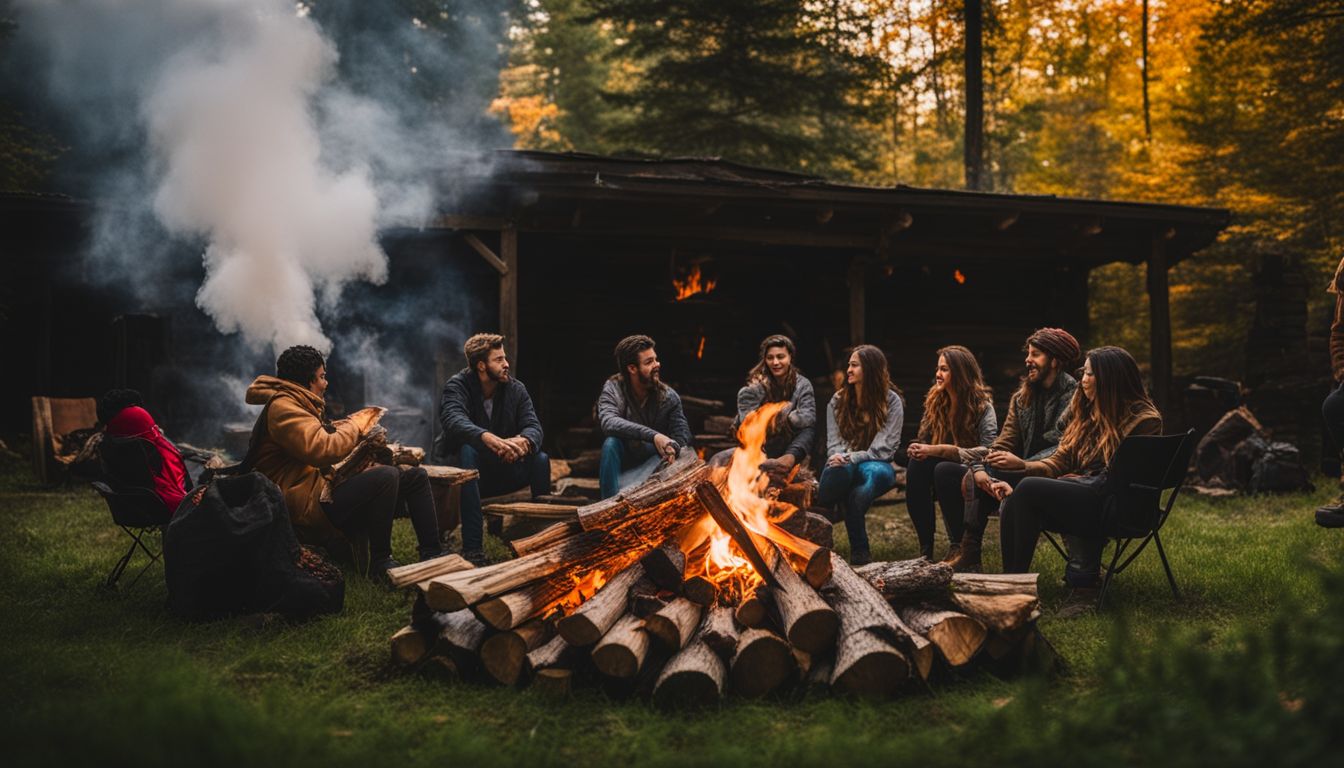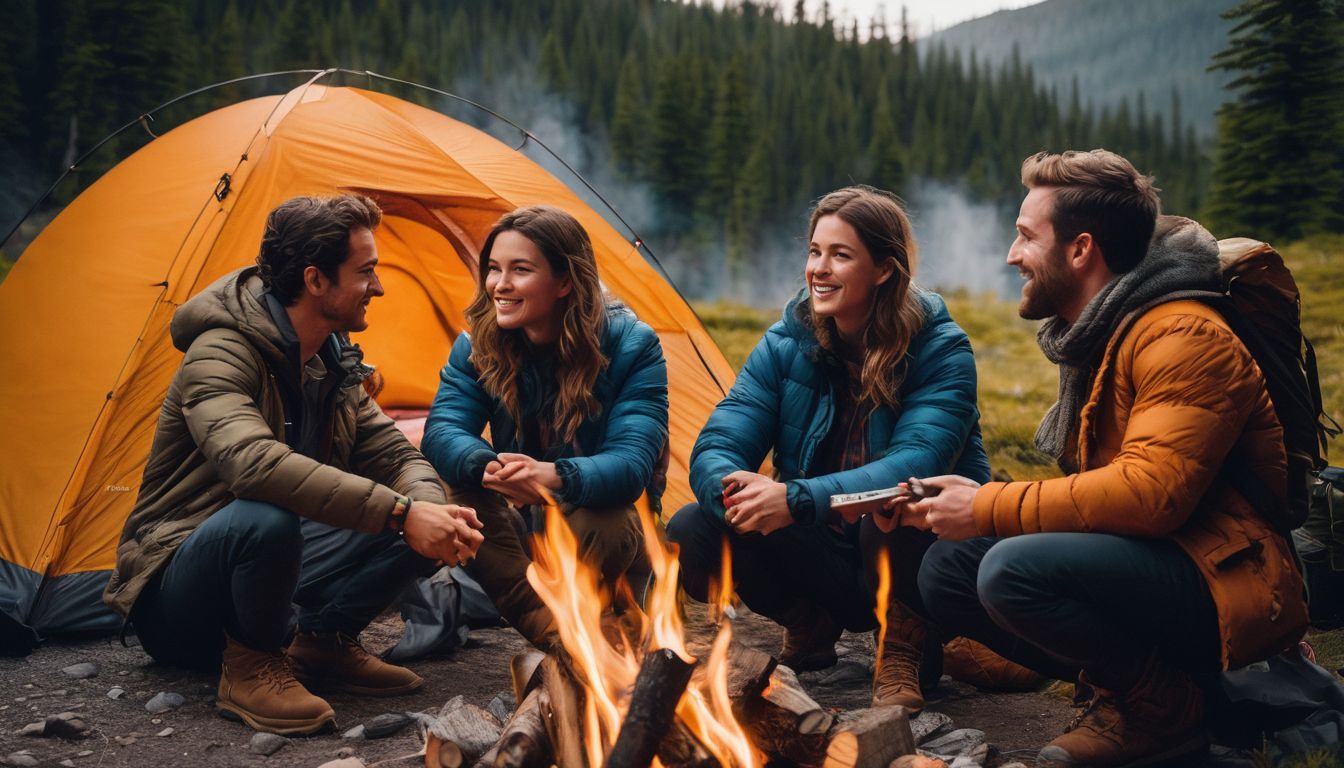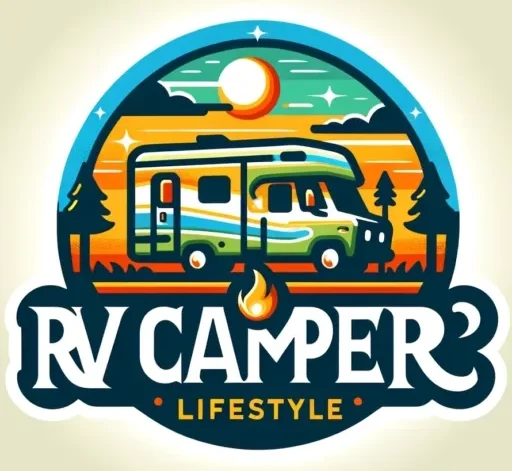Campfires At A Seasonal Campground: Everything You Need To Know About Tips, Safety, And Regulations
Gathering around a warm campfire is the heart of many camping trips, but it can be tricky to know all the rules. Did you know that proper campfire setup and maintenance are key to a safe and enjoyable experience? This article lights the way through essential tips, safety protocols, and regulations at seasonal campgrounds.
Get ready to master the art of the perfect campfire!
Key Takeaways
- Check local fire regulations at the campground before starting a campfire.
- Always use designated fire pits and gather or buy local wood.
- Clear an area of flammable materials and build your fire safely with tinder, kindling, and logs.
- Keep water nearby and never leave your campfire unattended.
- Put out the campfire completely by soaking it with water, stirring ashes, and checking for heat.
Understanding Seasonal Campground Regulations for Campfires

Before you strike a match at your seasonal campground, it’s crucial to know the rules. Campground regulations can change with the seasons and weather conditions. Look up the local fire safety guidelines online or ask park staff upon arrival.
They will tell you if fires are allowed and where you can light them.
Some campgrounds provide fire rings for campers to use. Always use these designated spots instead of creating your own. They help prevent wildfires and keep everyone safe. Check for any recent fire bans in the area too; dry periods could mean no fires at all.
If there is a ban, respect it—it’s there to protect forests, wildlife, and fellow campers.
In places without a burn ban, gather your wood responsibly if it’s permitted—never cut down living trees or branches! Buying local firewood helps stop tree-killing insects from spreading into new areas.
Remember that some items should never be burned in a campfire: trash, plastic, cans or foil are big no-nos because they pollute the air and leave behind dangerous waste.
Essential Tips for Setting Up a Campfire

As the day unfolds into a canvas of stars, nothing enhances the camping experience quite like the warm glow of a campfire. To ensure those flames flicker safely and brilliantly, mastering the basics—from selecting an ideal location to igniting your firewood with finesse—is paramount for any seasoned or first-time camper.
Choosing a safe spot
Find a flat, open area away from trees, tents, and other flammable objects for your campfire. Make sure this spot is also shielded from the wind to prevent sparks from flying out. Always use a designated fire pit if one is available—they’re designed for safety and ease of use.
Keep your fire small; this makes it easier to manage and less likely to get out of control.
Before lighting the campfire, clear any dry leaves, twigs, or grass within a ten-foot radius. This guards against accidental fires spreading through these materials. Have water or sand close by in case you need to put the fire out quickly.
And remember: never leave your campfire unattended! A sudden gust of wind can spread flames faster than you may think.
Creating a tinder bed and adding kindling
Starting your campfire begins with laying down a solid foundation. First, you need to create a bed of tinder and add kindling.
- Clear the ground where you will build your fire. Remove any leaves, twigs, or grasses that could catch fire.
- Make a small nest of tinder in the center of the cleared space. Use dry materials like leaves, pine needles, or dryer lint.
- Place your kindling on top of the tinder in a teepee shape. Thin sticks and twigs work best for this step.
- Leave an opening on one side of your teepee structure. This allows air to flow and makes it easier to light the tinder.
- Light the tinder with a match or lighter through the opening. Wait until it starts burning steadily.
- Slowly add more kindling as the flames grow stronger. Keep an eye on the fire at all times.
- Never use flammable liquids to start your fire. It’s dangerous and against campfire safety rules.
- Use locally sourced firewood if possible – it prevents spreading pests and diseases.
Building and lighting the fire
Building your campfire takes skill and care. Here’s how to do it right and keep it blazing:
- Pick a safe spot away from trees, bushes, and other flammable materials. Make sure tents or RV awnings are a good distance away.
- Clear the area of dry leaves, twigs, and anything that might catch fire. You want a bare dirt circle where your campfire will be.
- Create a tinder bed using small pieces of dry grass, leaves, or commercial fire starters. This is what will catch the initial spark.
- Add kindling in the form of small sticks and twigs over your tinder in a teepee shape. Air can flow through this structure easily, feeding the flames.
- Use larger pieces of firewood to build a stronger structure around the kindling teepee. Arrange them like a log cabin for stability.
- Light the tinder with matches or a lighter at multiple points to ensure an even burn. If you’re using flint, strike it near the edge of the tinder bed.
- Blow gently on the base of the fire to give it more oxygen, which fuels its growth—but don’t get too close!
- As your fire grows, add more wood carefully. Place larger logs on top as needed but allow air to circulate.
- Keep pots and pans handy if you plan on cooking. Once you have steady flames, you’re ready to heat up some hobo packs or roast hot dogs.
- Watch out for smoking embers that may drift—keep them contained within your fire pit area.
Campfire Safety Measures
Navigating the nuances of campfire safety is a crucial step in ensuring your outdoor adventures remain both enjoyable and hazard-free; keep reading for insights on how to maintain vigilance and safeguard against the unexpected.
Never leaving a campfire unattended
Always keep an eye on your campfire. This rule is key for safety and caring for the environment. A single moment can lead to a fire spreading quickly, especially in areas with lots of dry grass, pines, or spruce trees.
Think ahead and plan. Have water nearby and tools like a shovel just in case you need to put out flames fast.
Remember, campfires are not pets – they don’t follow commands! If left alone, they can get out of control before you know it. Stay by your fire until it’s completely safe to leave: that means coals are cold enough to touch.
It’s all about being responsible so everyone can enjoy their time at kampgrounds across America safely.
Properly extinguishing the fire
Putting out your campfire safely is as important as lighting it the right way. Here’s how to make sure your fire is completely out before you leave.
- Let the wood burn completely to ash, if possible.
- Pour lots of water on the fire; drown ALL embers, not just the red ones.
- Use a stick or shovel to stir and break up any chunks of coal.
- Make sure all burned materials have been soaked with water.
- Check the entire campsite for any stray sparks or embers.
- Feel all ashes with your hand to be sure everything is cold. Do this only after they look cool.
- Keep pouring water until you can’t hear any more hissing sounds.
- Stay close by until you’re certain that the fire cannot start again.
Conclusion
Gathering around a campfire is one of the best parts of camping. Make it safe and fun by following rules and tips. Keep fires small, use local wood, and never walk away from a blazing fire.
Before you sleep or head out, put that fire completely out. Enjoy your campfire – the right way keeps everyone safe!
FAQs
Keep your campfires small, surround them with rocks, and have water nearby to put it out. Always buy local firewood—it stops pests from spreading. Remember, never leave your fire unattended!
Start with smaller pieces of wood and kindle it slowly; use matches or lighters designed for outdoor use. Stack your wood thoughtfully—like a pyramid—to let air flow through.
Actually no—transporting firewood can spread insects and diseases harmful to trees. Campgrounds often recommend using local fire wood or buying it from approved vendors like Kampgrounds of America.
Douse your campfire with water until the hissing stops; stir the ashes and add more water if needed. Check that everything’s cool—literally! Make sure all embers are out before you leave or go to sleep.







